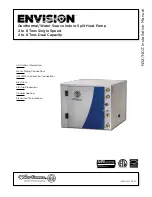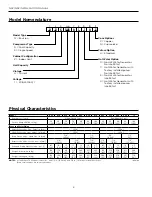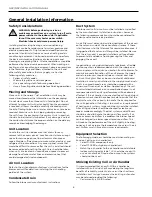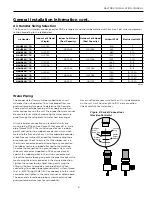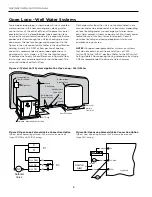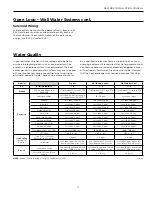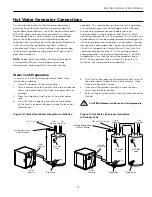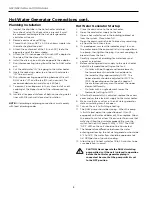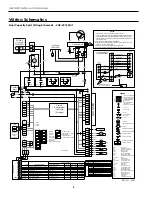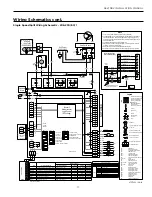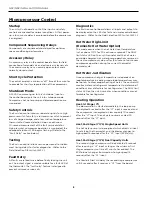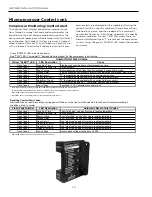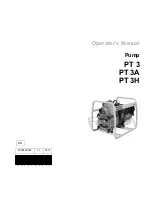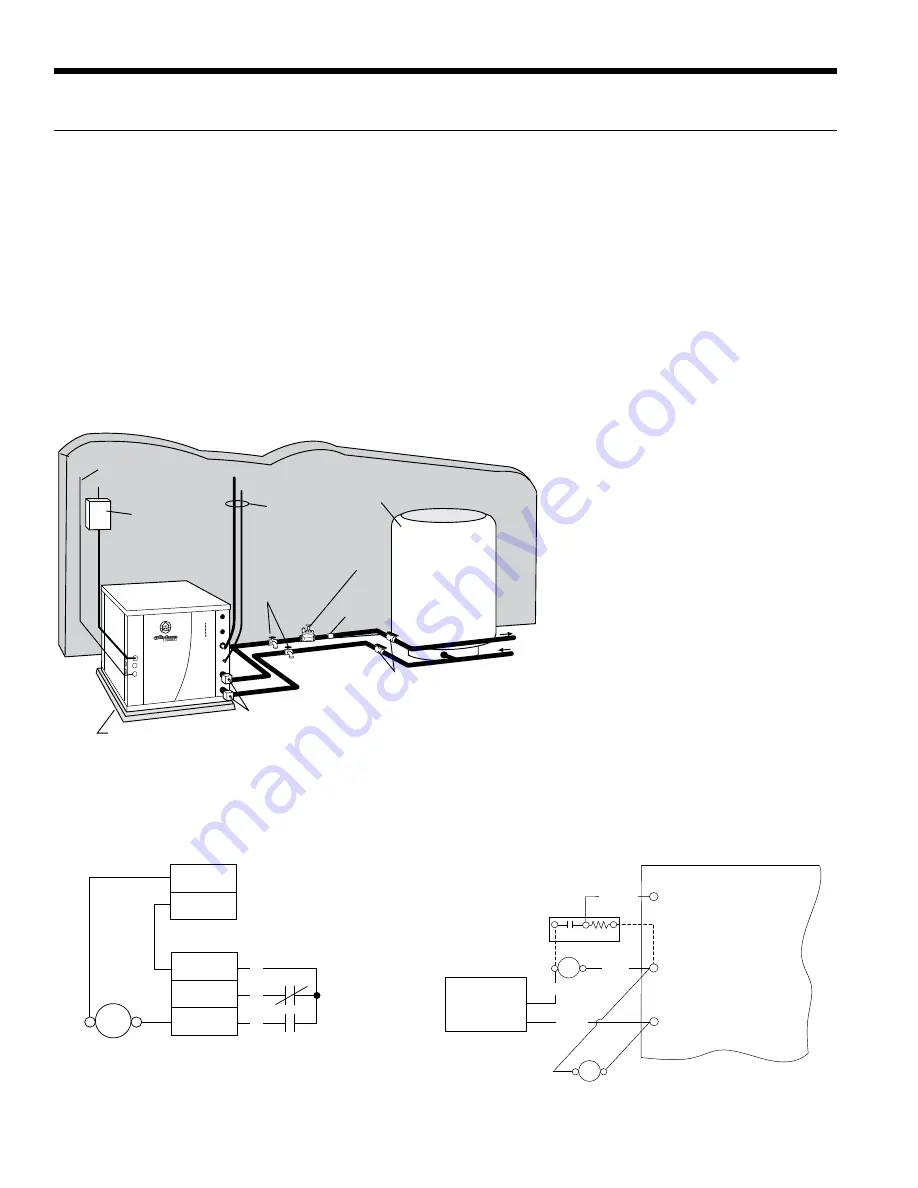
10
NSZ/NDZ INSTALLATION MANUAL
Typical open loop piping is shown below. Always maintain
water pressure in the heat exchanger by placing water
control valves at the outlet of the unit to prevent mineral
precipitation. Use a closed bladder type expansion tank
to minimize mineral formation due to air exposure. Ensure
proper water flow through the unit by checking pressure
drop across the heat exchanger and comparing it to the
figures in the unit capacity data tables in the specification
catalog. Usually 1.5-2 GPM of flow per ton of cooling
capacity is recommended in open loop applications. In
dual capacity units, stage 1 is 70% of the total tonnage.
Therefore, due to only minor differences in flow rate from
low to high, only one solenoid valve should be used. The
valve should be sized for full flow.
Figure 4: Typical Split System Application Open Loop - Well Water
Disconnect
Thermostat Wire
From Air Handler
Vibration Absorbing Pad or Air Pad
P/T Plugs
Boiler Drains for
System Flushing
Water Solenoid
Control Valve
Rubber Bladder
Pressure Tank
Lineset
To Air Handler
Flow
Regulator
Shut-Off Valves
Water Out
Water In
From W ell
Acc Com
Acc NC
Acc NO
1
2
3
C
R
P1
P3
SV
Solenoid
Valve
CC-GND
CC
CCHI
Comfort
Alert
Y1
Y2
Logic Board
Violet(3)
Blk(1)
Wht(4)
VM valve
Violet(2)
CC
SV
Figure 9b: Open Loop Solenoid Valve Connection Option
Typical slow operating external 24V water solenoid valve
(type VM) wiring.
Figure 5: Open Loop Solenoid Valve Connection Option
Typical quick operating external 24V water solenoid valve
(type PPV100 or BPV100) wiring.
Open Loop - Well Water Systems
Discharge water from the unit is not contaminated in any
manner and can be disposed of in various ways depending
on local building codes (i.e. recharge well, storm sewer,
drain field, adjacent stream or pond, etc.). Most local codes
forbid the use of sanitary sewer for disposal. Consult
your local building and zoning departments to ensure
compliance in your area.
NOTES:
For open loop/groundwater systems or systems
that do not contain an antifreeze solution, set SW2-
Switch #2 to the “WELL” position (Refer to the DIP Switch
Settings table.) Slow opening/closing solenoid valves (type
VM) are recommended to eliminate water hammer.

